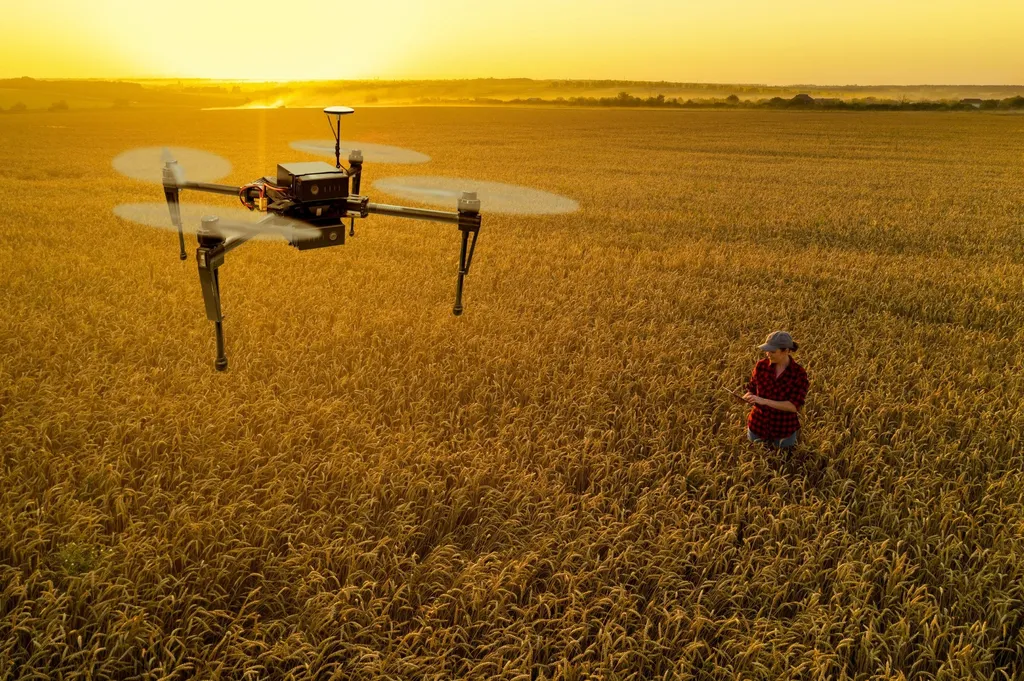In the ever-evolving landscape of precision agriculture, a groundbreaking study published in *Artificial Intelligence in Agriculture* is set to redefine how farmers monitor wheat growth. Led by Ziheng Feng of Henan Agriculture University and the Beijing Academy of Agriculture and Forestry Sciences, the research introduces a dual-mode framework that leverages UAV (Unmanned Aerial Vehicle) technology and deep learning to overcome longstanding challenges in wheat phenology monitoring.
The BBCH scale, a standardized system for describing plant development, has been a cornerstone of agricultural science. However, traditional UAV-based monitoring often encounters spectral ambiguities, where multiple vegetation indices correspond to the same growth stage. This limitation can lead to inaccuracies in assessing wheat phenology, hindering optimal agricultural practices.
Feng’s team developed a novel approach that integrates time-series reconstruction with hybrid deep learning models. By using UAV multispectral and digital imagery from 333 plots over the 2023–2024 growing seasons, the researchers reconstructed daily-resolved vegetation indices, color/texture features, and BBCH stages. They employed Gaussian, PCHIP, and linear fitting techniques to mitigate environmental noise, ensuring robust data quality.
One of the study’s key innovations is the use of synthetic datasets with Gaussian noise (5–100% relative intensity) to simulate real-world field variability. This approach allowed the team to optimize feature selection through Competitive Adaptive Reweighted Sampling (CARS) and Variance Inflation Factor (VIF), enhancing the model’s accuracy and reliability.
The hybrid CNN-GRU and CNN-LSTM architectures proved superior to standalone networks, effectively resolving spectral ambiguities in single-phase data and leveraging temporal patterns during time-series analysis. “Our models demonstrated remarkable accuracy under noise-free conditions, with CNN-GRU achieving an R2 of 0.90–0.98 and an RMSE of 3.61–7.65 BBCH units,” Feng explained. “However, as noise intensity increased, accuracy decreased proportionally, highlighting the need for robust noise augmentation strategies.”
The study also introduced the Rate of Phenological Development (RPDW), a novel metric quantifying the slope of BBCH progression. This metric offers valuable insights for breeding programs, enabling more informed decision-making. Additionally, the noise-optimized single-phase approach provides a practical solution for resource-efficient phenology tracking, particularly beneficial for family farms.
The commercial implications of this research are substantial. By enabling more accurate and efficient monitoring of wheat growth, farmers can optimize resource allocation, improve crop yields, and reduce environmental impact. The dual-mode framework’s adaptability to different noise levels ensures its applicability across diverse agricultural settings, from large-scale farms to smallholder operations.
As the agriculture sector continues to embrace technological advancements, Feng’s work represents a significant step forward in precision agriculture. The integration of UAV technology, deep learning, and innovative noise augmentation strategies sets a new standard for phenology monitoring, paving the way for more sustainable and productive farming practices.
With the lead author, Ziheng Feng, affiliated with the Agronomy College of Henan Agriculture University and the Beijing Academy of Agriculture and Forestry Sciences, this research not only bridges methodological innovation with scalable solutions but also underscores the importance of interdisciplinary collaboration in advancing agricultural science. As the field continues to evolve, the insights and tools developed in this study are poised to shape future developments, driving the agriculture sector toward a more data-driven and efficient future.

